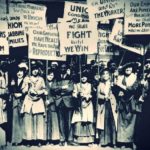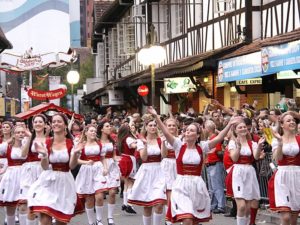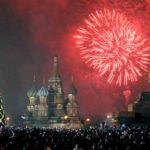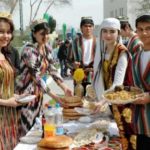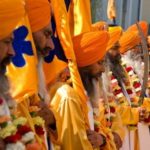May 1 – a holiday of spring and labor
 May 1, as the Day of Solidarity of Workers of the World, was declared at the Paris Congress of the Second International in July 1988, in memory of the victims of the demonstration of workers in the USA and Canada in 1886. Since then, on this day, strikes and rallies began in all countries to demand better social conditions for the working class.
May 1, as the Day of Solidarity of Workers of the World, was declared at the Paris Congress of the Second International in July 1988, in memory of the victims of the demonstration of workers in the USA and Canada in 1886. Since then, on this day, strikes and rallies began in all countries to demand better social conditions for the working class.
In Russia, May 1 after the October Revolution of 1917, May 1 became an official holiday, and since 1992 the holiday was renamed the “Festival of Spring and Labor.”
May 1 – a holiday of spring and labor
The history of the May holidays goes back to ancient times of Ancient Rome. The month of May is named after Maya, the goddess of nature, greenery and flowers. In ancient Rome, it was customary to celebrate the onset of this month in a special way. People decorated their homes with green branches, played musical instruments, arranged dances, doused each other with water, in short celebrated how spring could come.
It was this day that the workers of Australia chose in 1856 to defiantly demand from the owners a reduction in the working day to eight hours, after which such demonstrations began to be held annually.
In 1886, the unions of the United States and Canada, following the example of the Australians, staged a demonstration of workers with similar requirements. The demonstrations were dispersed, as a result of which several dozen people were killed and injured, 5 instigators were hanged.
In memory of these victims, it was decided on May 1, 1890 to hold a general strike. At the Paris Congress of the Second International in July 1988, May 1 was declared the Day of Solidarity of Workers of the World, rallies and demonstrations began to be held in all countries with the advancement of the social demands of the working class.
In Russia, on May 1, 1890, workers in Warsaw conducted the first strike in which about 10 thousand workers participated. Since 1897, the so-called May Day celebrations began to take place in almost all industrial cities of the Russian Empire. In addition to social ones, political demands began to be put forward with calls for a change of power, the creation of a republic, and the nationalization of factories and plants. Usually such strikes were dispersed by troops, the organizers were arrested. In 1912-1914, more than 400 thousand workers participated in May Day strikes and demonstrations.
After the February Revolution of 1917, May 1 was first celebrated openly. On this day, millions of workers took to the streets demanding the deposition of the Provisional Government and the transfer of power to the Soviets of Workers ‘and Soldiers’ Deputies.
After the October Revolution, May 1 became an official holiday. Initially, it was called “International Day”, and later renamed “Day of International Workers’ Solidarity – May Day.” On this day, in all cities, demonstrations of workers, military parades and fireworks were held. For the first time, the Red Army parade was held in 1918 on the Khodynsky field.

